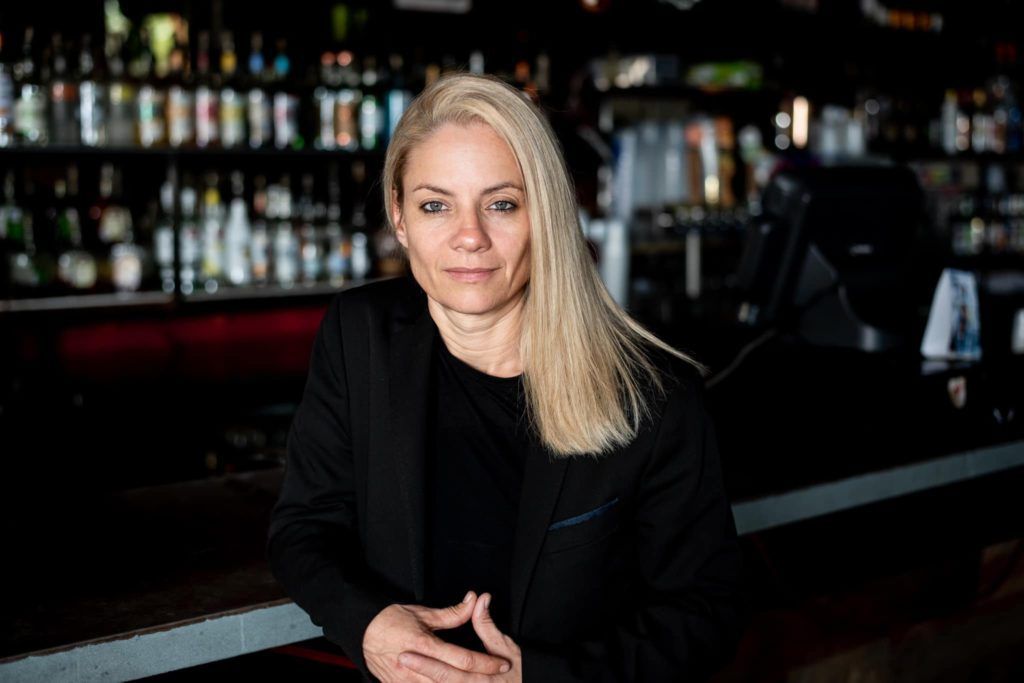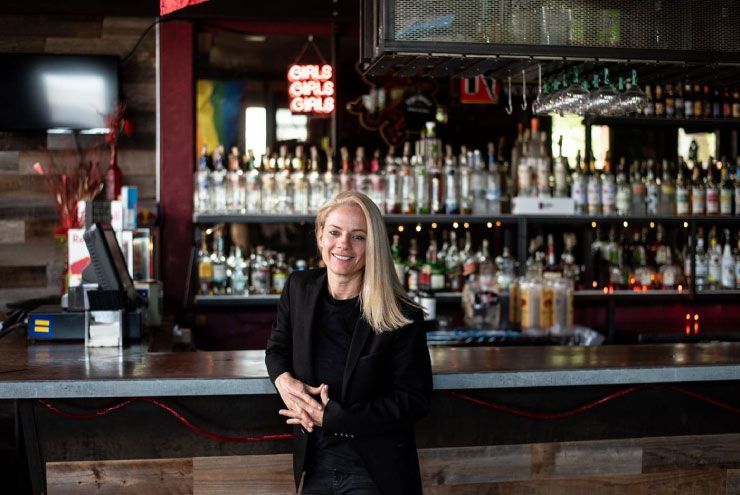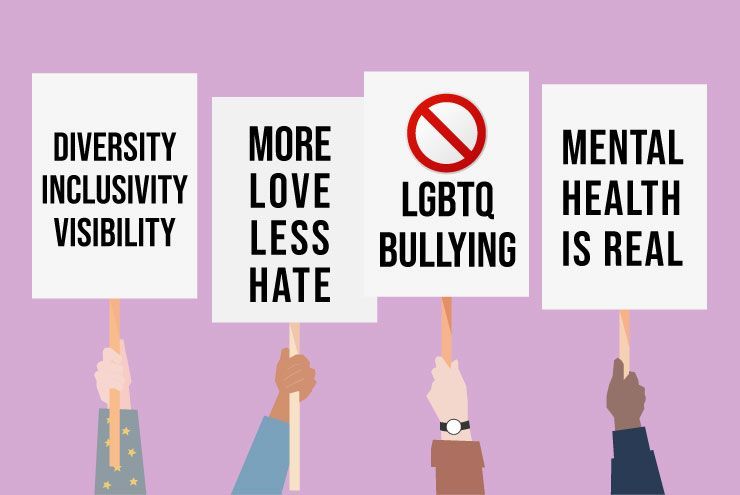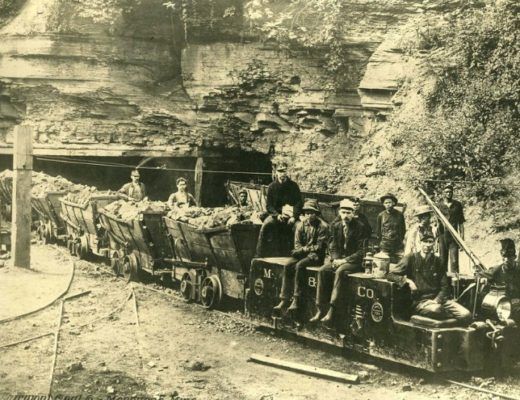By Aubrey F. Burghardt
Okay, readers, here is where I lay down some shocking news that I myself only recently discovered over a crisp Lone Star (we are in Texas, after all!). Lesbians, pull your chairs closer and keep your jaws snapped shut, because I have a feeling they might just fall open.
Let’s dish.
There is an obvious lack of safe lesbian bars and queer nightlife spots for femmes and lesbians in Houston. This is not just a regional issue, but a ubiquitous, nationwide setback. After scouring the Internet, I could only confidently identify 10 bars in the entire United States (now don’t crucify me if I’ve missed one) that were demarcated as lesbian bars. You read me right: Sue Ellen’s in Dallas; Henrietta Hudson in New York; League of Her Own in D.C.; Cubby Hole in New York; Jolene’s in San Francisco; Lipstick Lounge in Nashville; Gossip Grill in San Diego; Wildrose in Seattle; My Sister’s Room in Atlanta; and lastly (but most imperatively), Pearl Bar in Houston. We can go back and forth on what constitutes a lesbian bar, but for the sake of this article, I’m discussing bars that are exclusively founded with the intention of catering to the lesbian community.
My initial research seemed to promote the idea that lesbian bars were widespread across the nation. To my dismay, a deeper look revealed that the majority of links that turned up in my search results were actually straight bars offering “lesbian nights,” listed as “great” for lesbians, or gay bars that are not true lesbian-dedicated spaces. While reading reviews of these bars, I noticed a lot of comments from lesbian and queer women patrons denouncing the idea that these are lesbian-specific spaces. Why is it so difficult to find a clearly defined lesbian bar? We aren’t all running back into the closet, are we?
There must be a rhyme or reason as to why lesbian bars are closing up shop, right? How is it that safe zones for lesbian nightlife are shuttering when we, as a collective, are so clearly seeking to create community and camaraderie in spaces that are catered to our needs of safety, identity, and recognition? Endless explanations could be offered. My initial reasoning was somewhat obvious—that running a business in the service industry is risky. Bar turnover is quick, after all. However, this seems contrary to the thought that, as we progress in terms of LGBTQIA+ awareness and acceptance, there, in turn, should be a groundswell of support of small business occupying these tailor-made watering holes. Hell, I’d drink to queerness if it came bottled.
So in order to acknowledge and consider the explanations as to why lesbian bars are few and far between—and more importantly, the problematic conundrum of their near-extinction—it helps to consider what a prosperous, thriving, identifiable lesbian bar looks like in the first place. We don’t need to look any further than our own local haunt, Pearl Bar.
I decided to meet up with Julie Mabry, Pearl Bar’s doyenne, queer marketing queen, and longtime service industry heavyweight. The bar is preparing for Pride week, scattered about is an assortment of t-shirts and flyers stamped with rainbow promotions. Mabry is behind the bar, stocking the mini fridge with beer and inspecting wells with a determined, slightly furrowed brow that reflects her speed and agility. I would have mistaken her for a bartender if it weren’t for her commanding presence. And she is easy to recognize, from the boatloads of well-deserved press she’s received for her work with Pearl, past bar ventures like The Usual, and Girl Jam Productions.
Mabry meets me outside, brings me a beer, and sits across from me. I begin to ask my questions, and our conversation flows like most do at bars—some topics are surface level and some are deeper, asked in a confident, yet slightly-influenced tone, at a volume just loud enough to overpower the top–40 hit playing over the bar’s speakers.
Keeping Pearl Bar afloat requires maintaining a precarious balance in a continuously stressful environment, Mabry says. She launches into a moving exchange about the lesbian scene in Houston, noting that, while the rest of the country may see Texas as just another red state, they’re blind to the fact that Houston isn’t just another Texas city. “[Houston has a] healthy gay scene that is proactive!” she exclaims. “We have and have had gay elected officials like Annise Parker.” When I ask why this is important, she explains that it’s reflective of Houston as a whole—“It takes the entire population to vote queer,” Mabry says. The livelihood and longevity of Pearl is also indicative of Houston’s attitude toward queerness. While Texas may be a red state, Houston isn’t a red city.
I sip, she speaks. She talks about how, growing up, Montrose was her gateway to the gay scene, and how she was enamored by the outward and unapologetic gayness it exuded. Her dream was simple: Mabry knew she was gay and she knew she wanted to own a bar. “Houston’s always been ahead in the gay scene, [especially] with Montrose being how it was in the ‘80s,” she says. I relate to Mabry on this topic. I live within walking distance from the male gay bars of Montrose, atrociously but affectionately dubbed ‘the gayborhood.’ And coming home every night during the weekends, I see the streets of Taft and Fairview inundated with gay men going to gay bars—JR’s, George’s, Ripcord, Crocker Bar—the list goes on. But these gay bars are tailored to gay men and not queer women.
Bars specifically for queer women used to exist, she says. Montrose had “The Ranch” 20-some-odd years ago, followed by Chances (which closed its doors in 2010), and then The Usual, which ceased operation in 2014.
Mabry credits the smoking ban as one of the leading reasons why the lesbian bar scene has changed, noting that a lot of queer people stopped going to gay bars because they couldn’t smoke inside anymore. Over a decade ago, Houston passed an ordinance that omitted smoking in non-smoking areas and filed it under environmental and health code reasons. Mabry expressed that, after the ordinance was passed, she noticed that gay bar patrons started to venture out to bars with patios where they could legally smoke—venues that happened to be non-gay bars. Chances, for example didn’t have a smoking patio; therefore, new spaces had to be visited. “A lot of gay people started going to straight venues and bars [after the ban],” she says. “That’s really when the change in our scene happened. It changed the gay scene tremendously.”
Mabry doesn’t just attribute the entire shift in queer nighttime culture to the smoking ban; rather, it’s just one of many observations by someone who has worked their entire career in the bar business. But considering the lifestyle choices that are associated with consuming adult beverages, smoking cigarettes is a common accessory. That theory checks out.

“I will continue to [work endlessly] for the community.” -Julie Mabry. Photo by Eric Edward Schell.
Bigger than the smoking ban, however, has been society’s general broadening of its tolerance and acceptance of the LGBTQ community. The exclusivity of being a lesbian-specific space used to be an advantage, Mabry says, serving as a necessary community link to other like-minded people and businesses. Matching the bar to its clientele helped with relationship building, business connections, and patrons’ peace-of-mind knowing that they would not face bias or rejection. However, as society has progressed and become more tolerant and accessible toward LGBTQ people, the need for such places of freedom of expression has shifted.
Mabry says she truly saw the gravity of this change when she began working at the patio bar The Usual (may she rest in peace). “In my opinion, people just started going to straight outside bars and patios and they realized that people didn’t care that they were gay,” she says. “The lesbians started going to The Usual and trickled out of Montrose.” (Side note: The Usual was the first bar that served me underage. I mention this to Mabry who is shocked and horrified that her bar let me sneak in. In my defense, I was very determined. I find it beautifully ironic that my first bar was a lesbian bar, and at the time, I was still repressing my bi-curiosity. The universe works in funny ways.)
“Owning a lesbian bar is not a ‘get rich quick’ scheme,” Mabry adds. “It entails a lot of work and loyalty to your community. Your heart has to be there for your community. I also believe there is a generational shift away from the word ‘gay’ and ‘lesbian.’ The ‘queer’ lifestyle has become more mainstream and people don’t want to be labeled as one or the other. ‘Lesbian’ seems to be confined to one lifestyle, while our queer community has become more inclusive to everyone, be it non-binary, transgender, gay, or lesbian [identities]. In our community, it is imperative to stay aware of these changes and to be more inclusive. I think lesbians have also evolved, and with social media, have found more things to do than just be at the bar. Whatever the case, I will continue to [work endlessly] for the community.”
I ask her what a safe space looks like for her as a queer woman. She replies: “The whole reason I wanted to open a bar was because, at age 16, I knew I was gay. My sister, who is also gay, was completely out at 19 and started going to The Bonham Exchange [a San Antonio gay bar].” Mabry explains that she saw a different, but authentic, side to her sister at Bonham. There, her sister could be herself. “Comfort is a priority, as is protection,” she continues. “Here, we are careful. We don’t tolerate ignorance. We hold each other accountable.”
So how can we, as a community, continue to preserve vital lesbian and queer nightlife venues like Pearl Bar?
“What’s important within gay/lesbian business is representation [and making sure there are] programs and committees to keep them thriving, as well as allocated funding and donations,” Mabry says.
Pearl Bar is able to weather the fast-paced, high-turnover Houston bar scene storm because of all the energy, thought, and time that Mabry puts in. The donor-backed financial support. The emotional support. The visibility and support for other queer clients and allowing them the venue in which to live faithfully to themselves. It is the space itself that makes them feel respected, valued, and heard. That’s what makes Pearl Bar resilient.
“We have continually put our hard-earned money back into the community and the bar,” Mabry says earnestly. “I believe people notice that and it makes them feel appreciated, and they are. We book talented queer DJs, which makes a huge difference. We try to not charge a door cover, which is also a major factor. Also, my heart and soul is in Pearl and people see that.”








Andrella Drell Jones
August 23, 2019 at 12:45 PMAwesome, so proud of you.
I’m a bartender, if you need anything let me know. My Facebook Andrella Drell Jones